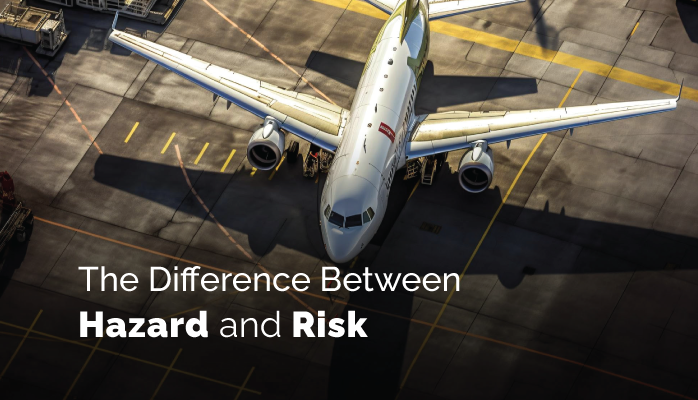What’s in a Name?

Identifying hazards is a big part of implementing a Safety Management System or SMS. Most of us assume that we know what a hazard is. It’s not a complicated word, we’re pretty sure we know what it means. No problem, right?
Problem is, hazard might be one of the most misunderstood words in the English language. Probably because a lot of definitions you’ll find say something like what Google tells us, “a danger or risk.” From this, we could gather that a hazard and a risk are the same.
Despite the common usage of hazard and risk synonymously, when one digs deeper into hazards and risk, a common thread emerges regardless of industry. For those who’ve made safety a profession, hazard and risk mean two distinctly different things.
Here’s how ICAO 9859 defines them:
For aviation safety risk management, the term hazard should be focused on those conditions that could cause or contribute to the unsafe operation of aircraft or aviation safety-related equipment, products, and services.
Risk is the assessed potential for adverse consequences resulting from a hazard. It is the likelihood that the hazard’s potential to cause harm will be realized.
So a hazard is anything which has the potential to cause harm, while the risk is the likelihood that harm will come to pass.
Identifying Hazards
Let’s imagine that we’re standing in the employee kitchen. Each time we enter a kitchen, we manage risk without thinking about it.
When we stop and consider, the kitchen is filled with hazards. Knives, stovetops, and chemicals all have the potential to do serious harm. A kitchen knife can cause cuts, stovetops can burn, and chemicals can kill.
Every day we interact with hazards like these, unconsciously assess the risks, and then act to mitigate them.
Related Aviation Hazard Articles
- How to Identify Hazards in Aviation SMS
- What Are Hazard Risk Assessment and Hazard Risk Analysis in Aviation SMS
- Best Practices for Hazard Reporting in Aviation SMS - With Examples
Assessing Risk
We’ve identified some hazards in our kitchen, but what kind of risk is associated with them? I for one, have inadvertently cut myself with a kitchen knife, so it seems that getting cut by a knife happens at least occasionally. From experience, I know that the cuts usually aren’t very bad, so the risk is relatively low.
The chemicals under the sink were another hazard. Many of them, if ingested or mixed incorrectly, could kill. The likelihood is pretty low that any adult would eat them, but the consequences are high so perhaps they have more risk than the knives.
Identify Hazards, Assess Risk
Obviously, identifying hazards in your organization goes far beyond the staff kitchen, but hopefully, this little thought exercise helps to clarify the difference between hazard and risk.
A hazard is anything with the ability to cause harm. A risk is an assessment of the likelihood that harm will come to pass. Both are crucial elements of safety risk management.
Once you’ve identified and assessed, you’ll be armed with the information you need to start mitigating those risks and making everyone a little bit safer.
Last updated October 2024.






